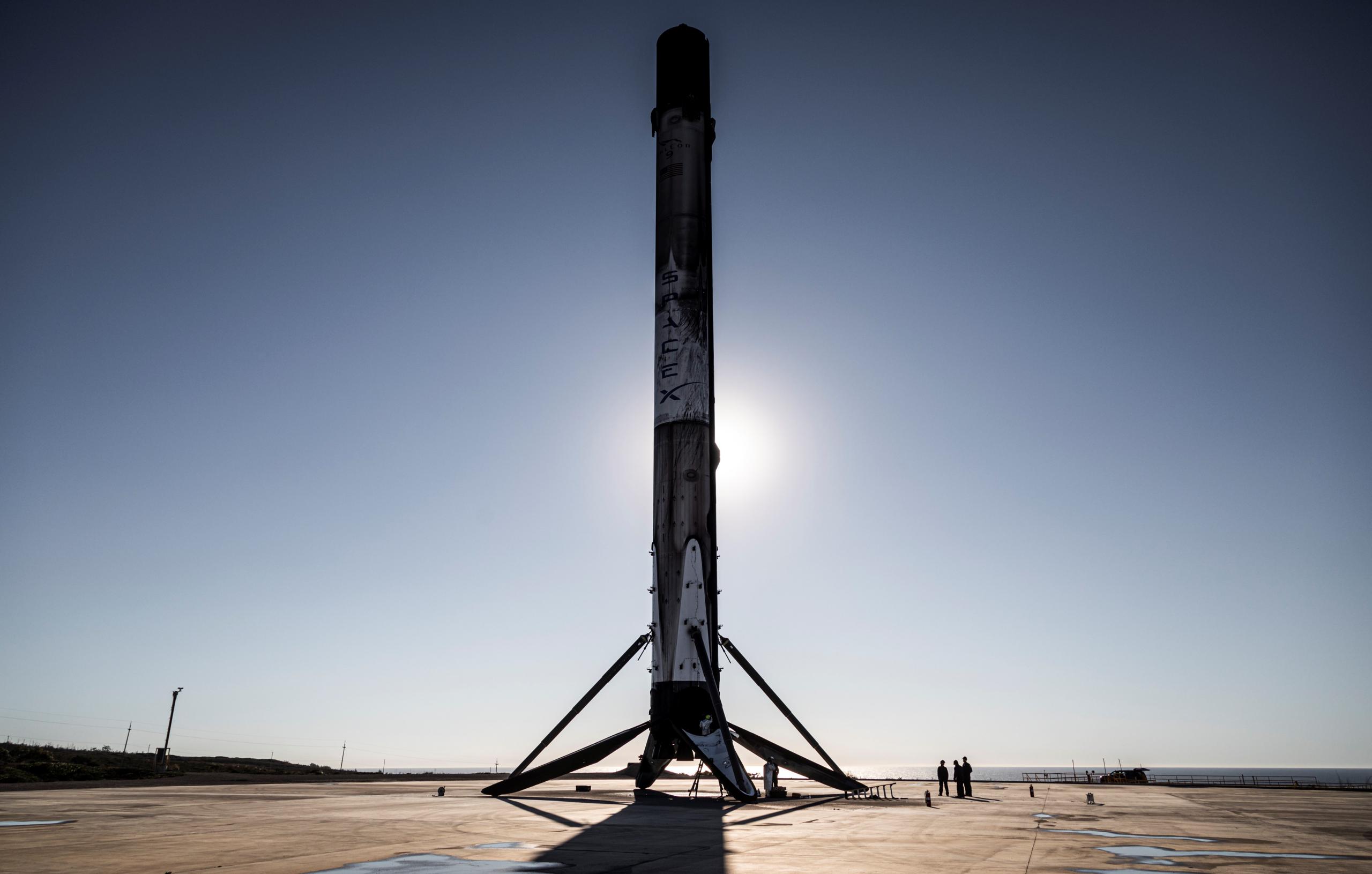
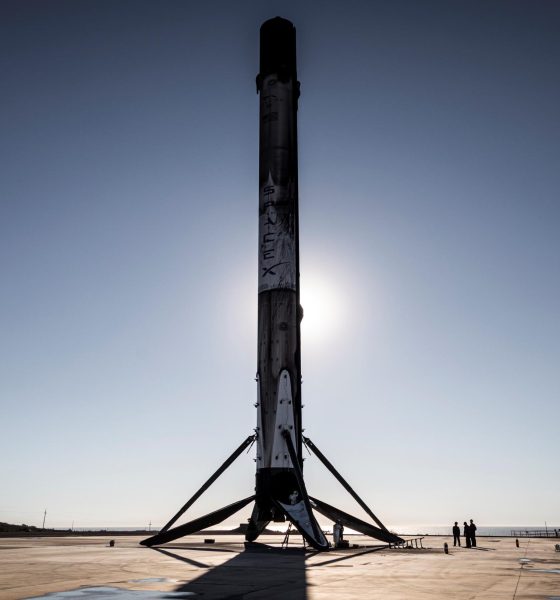
News
SpaceX static fires Falcon 9 rocket for next NRO spy satellite launch
SpaceX says it has successfully static-fired a Falcon 9 rocket scheduled to launch the company’s second National Reconnaissance Office (NRO) spy satellite mission of 2022 later this month.
Known as NROL-85, it may or may not be related to the NROL-87 mission SpaceX successfully launched out of its Vandenberg Space Force Base (VSFB) SLC-4 facilities on February 2nd. By all appearances, NROL-85 will be quite similar. Aside from using the same launch pad and also carrying a payload light enough to allow for a rare return-to-launch-site (RTLS) landing, NROL-85 will use the same Falcon 9 booster – B1071 – that launched NROL-87 as few as 72 days prior.
The NRO says NROL-85 is on track to lift off no earlier than (NET) 6:41 am PDT (13:41 UTC) on Friday, April 15th. Aside from narrowly missing out on an opportunity for a spectacular predawn launch, the current schedule has Falcon 9 launching almost ten days after its static fire test – perhaps the longest intentional gap between a SpaceX Falcon static fire and launch in recent memory. SpaceX has had occasional missions where technical issues or weather have delayed a launch by one or several weeks. However, it’s difficult to remember another instance where SpaceX successfully completed a static fire more than a week prior to a pre-planned launch date.
For years, a roughly 2-7-day delay between static fires and launches has become the norm for nominal operations, including particularly critical missions for NASA, the NRO, and the US military. NROL-87, for example, saw SpaceX static fire the same Falcon 9 booster scheduled to launch NROL-85 one week before launch. Oddly, NROL-85 will be the NRO’s second reuse of a Falcon 9 after NROL-108 launched on a four-flight booster in 2020, which makes it difficult to argue that reusability component of NROL-85 is responsible for the gap.
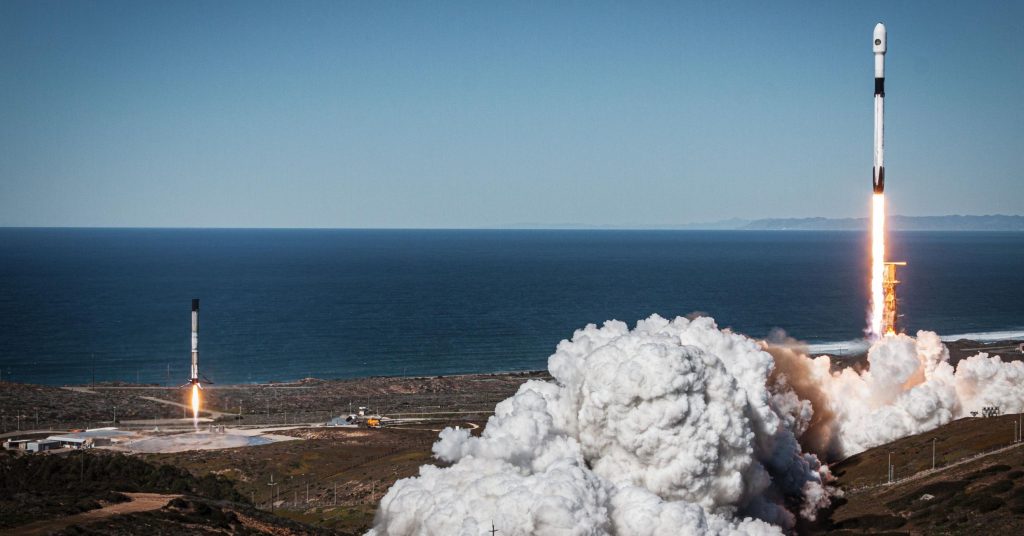
It’s possible that NROL-108 was a more risk-tolerant experiment or one-off payload and that NROL-87 and -85 are somehow more ‘operational,’ which might explain the unusually long delay between NROL-85’s static fire and launch date. It could also be mere conservatism. Such a long gap gives the NRO and SpaceX with plenty of flexibility to deal with any minor to moderate issues that might arise during launch preparations without immediately disrupting the April 15th target.
Unsurprisingly, that margin was likely unnecessary. The static fire was completed without issue on April 5th, leaving SpaceX firmly on track to launch NROL-85 on April 15th with almost ten full days to roll the rocket back to the hangar, install Falcon 9’s fairing, and roll the rocket back out to the pad. The mission will mark SpaceX’s 91st booster reuse and 89th launch with a flight-proven Falcon booster since March 2017.
Later this month, SpaceX is preparing to launch Crew-4 – carrying four NASA and ESA astronauts – as early as April 21st and Starlink 4-14 a few days after that.

News
Tesla announces major milestone at Gigafactory Shanghai
First deliveries started in December 2019, with the first units being given to employees. By the end of 2020, the plant was building cars at a run rate of around 150,000 vehicles annually.
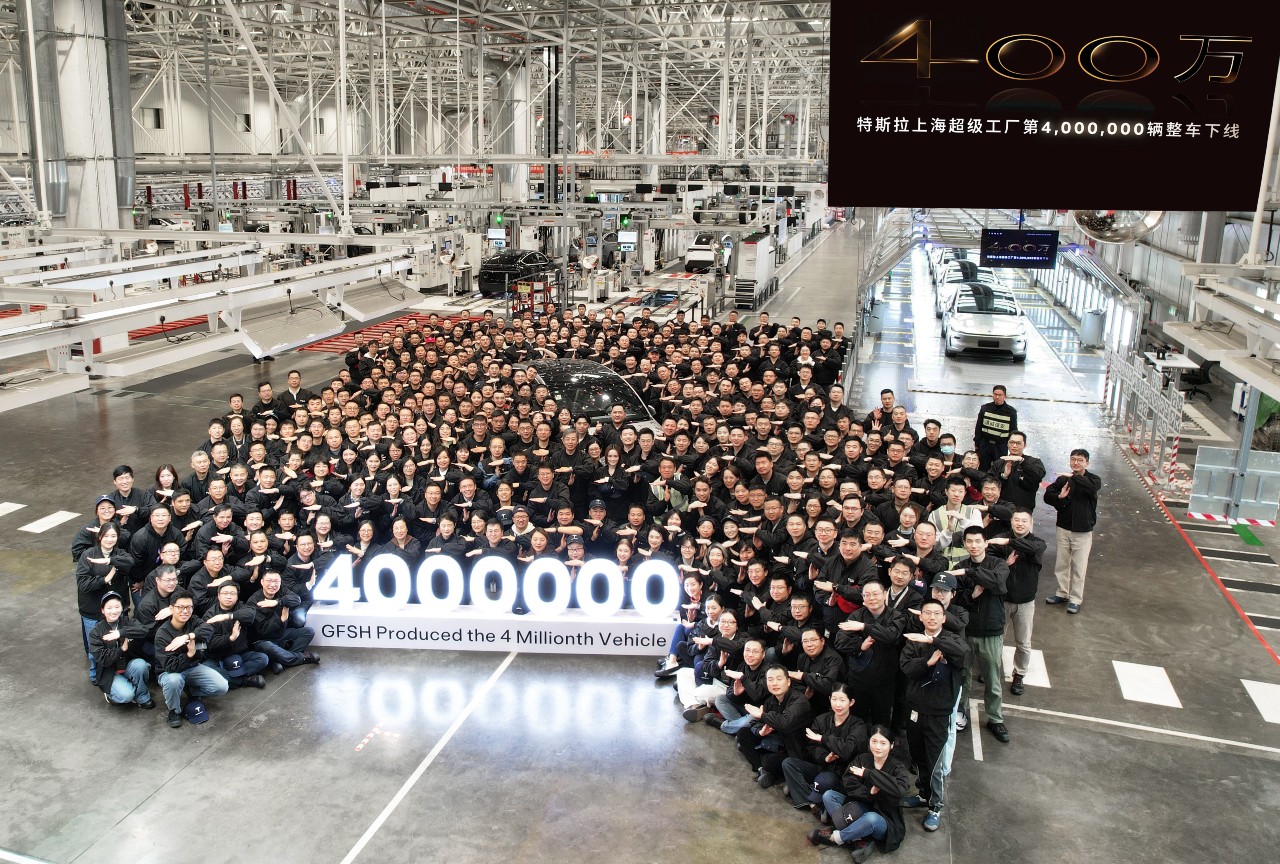
Tesla has announced a major milestone at its Chinese manufacturing facility, Gigafactory Shanghai, confirming on Monday that it had built its four millionth vehicle.
Tesla Gigafactory Shanghai first started building cars back in October 2019 with Model 3 assembly, just ten months after the company broke ground on the plant’s 86-hectare piece of land.
First deliveries started in December 2019, with the first units being given to employees. By the end of 2020, the plant was building cars at a run rate of around 150,000 vehicles annually. Production continued to ramp up, and by September 2023, less than three years after it started building Tesla’s EVs, it had built its two millionth vehicle.
Fast forward to December 2025, and Tesla has confirmed that four million cars have rolled off of production lines at the plant, a major milestone in the six short years it has been active:
Produced our 4 millionth vehicle at Gigafactory Shanghai🎉
Thanks to all our owners and supporters❤️ pic.twitter.com/DayVXUr220— Tesla Asia (@Tesla_Asia) December 8, 2025
The capacity at Giga Shanghai is exceeding 950,000 vehicles per year, and this year, the company has delivered 675,000 cars through the first three quarters. It is also the only plant to manufacture the Model Y L, a longer wheel-based configuration of the all-electric crossover that is exclusive to the Chinese market.
Gigafactory Shanghai’s four million cars have not all stayed within the domestic market, either. For a considerable period, the factory was exporting a significant portion of its monthly production to Europe, helping Gigafactory Berlin supplement some Model Y volume and all of its Model 3 deliveries. This is due to the Berlin plant’s exclusive production plans for the Model 3.
The site is one of the most crucial in the company’s global plans, and Gigafactory Shanghai’s incredible pace, which has led to four million production units in just about six years. It’s fair to say that it won’t be long until we’re seeing Tesla celebrate the plant’s five millionth vehicle produced, which should happen sometime late next year or in early 2027, based on its current manufacturing pace.
The company also builds the Megapack on the property in an adjacent Megafactory.
News
Tesla gamifies Supercharging with new ‘Charging Passport’
It will also include things like badges for special charging spots, among other metrics that will show all of the different places people have traveled to plug in for range.
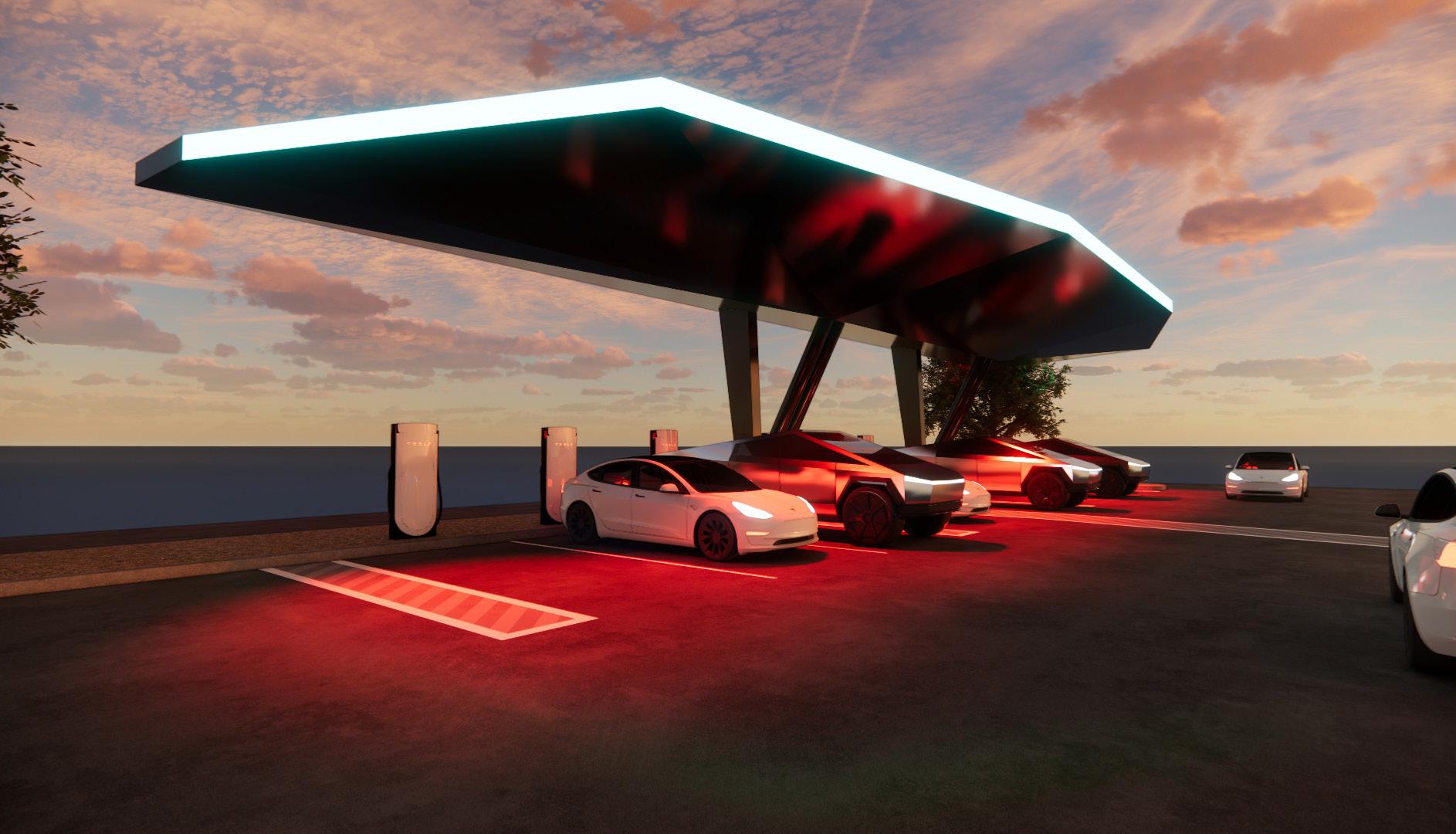
Tesla is gamifying its Supercharging experience by offering a new “Charging Passport,” hoping to add a new layer to the ownership experience.
While it is not part of the Holiday Update, it is rolling out around the same time and offers a handful of cool new features.
Tesla’s Charging Passport will be available within the smartphone app and will give a yearly summary of your charging experience, helping encapsulate your travel for that year.
It will also include things like badges for special charging spots, among other metrics that will show all of the different places people have traveled to plug in for range.
Tesla has just introduced “Charging Passport,” a new yearly summary of your charging.
• Charging badges: Iconic Charging badge (for visiting places like the Tesla Diner, Oasis Supercharger, etc), Explorer badge, green saver badge, etc.
• Total unique Superchargers visited
•… pic.twitter.com/c1DHTWXpj7— Sawyer Merritt (@SawyerMerritt) December 8, 2025
Tesla will include the following metrics within the new Charging Passport option within the Tesla app:
- Charging badges: Iconic charging badges for visiting places like the Tesla Diner, Oasis Supercharger, etc., Explorer Badge, and more
- Total Unique Superchargers Visited
- Total Charging Sessions
- Total Miles Added during Charging Sessions
- Top Charging Day
- Longest Trip
- Favorite Charging Locations
This will give people a unique way to see their travels throughout the year, and although it is not necessarily something that is needed or adds any genuine value, it is something that many owners will like to look back on. After all, things like Spotify Wrapped and Apple Music Replay have been a great way for people to see what music they listened to throughout the year.
This is essentially Tesla’s version of that.
With a handful of unique Superchargers already active, Tesla is also building some new ones, like a UFO-inspired location in New Mexico, near Roswell.
Tesla is building a new UFO-inspired Supercharger in the heart of Alien country
News
Tesla launches its coolest gift idea ever just a few weeks after it was announced
“Gift one month of Full Self-Driving (Supervised), which allows the vehicle to drive itself almost anywhere with minimal intervention.”

Tesla has launched its coolest gift idea ever, just a few weeks after it was announced.
Tesla is now giving owners the opportunity to gift Full Self-Driving for one month to friends or family through a new gifting program that was suggested to the company last month.
The program will enable people to send a fellow Tesla owner one month of the company’s semi-autonomous driving software, helping them to experience the Full Self-Driving suite and potentially help Tesla gain them as a subscriber of the program, or even an outright purchase.
Tesla is going to allow owners to purchase an FSD Subscription for another owner for different month options
You’ll be able to gift FSD to someone! https://t.co/V29dhf5URj
— TESLARATI (@Teslarati) November 3, 2025
Tesla has officially launched the program on its Shop. Sending one month of Full Self-Driving costs $112:
“Gift one month of Full Self-Driving (Supervised), which allows the vehicle to drive itself almost anywhere with minimal intervention. All sales are final. Can only be purchased and redeemed in the U.S. This gift card is valued at $112.00 and is intended to cover the price of one month of FSD (Supervised), including up to 13% sales tax. It is not guaranteed to cover the full monthly price if pricing or tax rates change. This gift card can be stored in Tesla Wallet and redeemed toward FSD (Supervised) or any other Tesla product or service that accepts gift card payments.”
Tesla has done a great job of expanding Full Self-Driving access over the past few years, especially by offering things like the Subscription program, free trials through referrals, and now this gift card program.
Gifting Full Self-Driving is another iteration of Tesla’s “butts in seats” strategy, which is its belief that it can flip consumers to its vehicles and products by simply letting people experience them.
There is also a reason behind pushing Full Self-Driving so hard, and it has to do with CEO Elon Musk’s compensation package. One tranche requires Musk to achieve a certain number of active paid Full Self-Driving subscriptions.
More people who try the suite are likely to pay for it over the long term.








